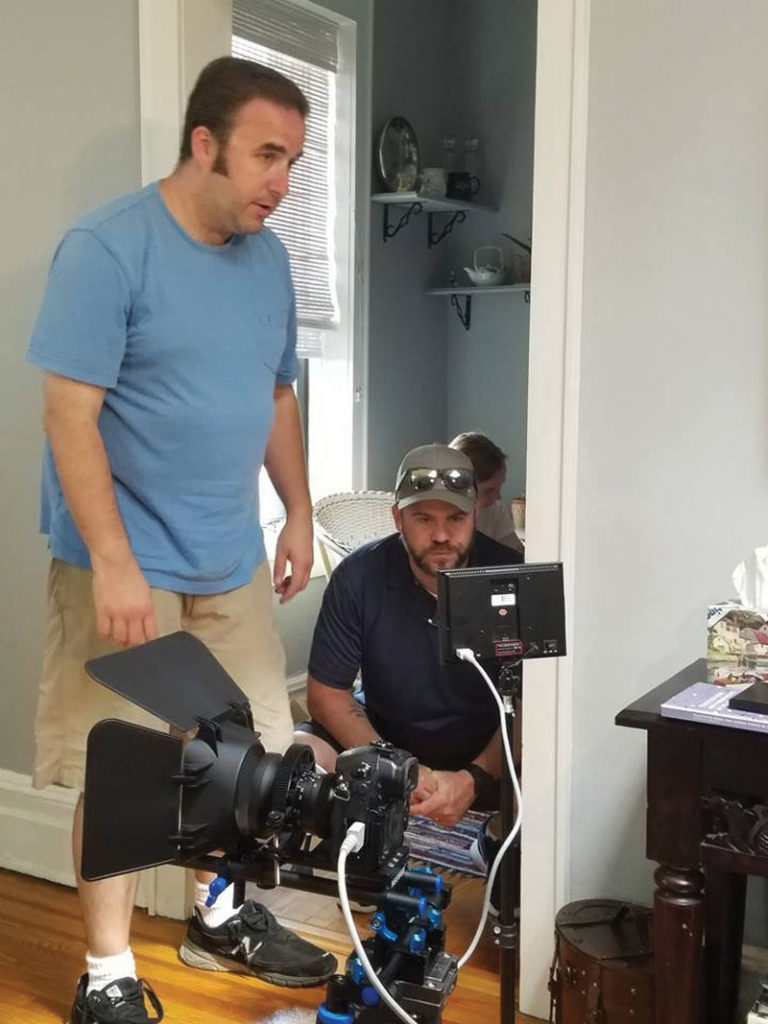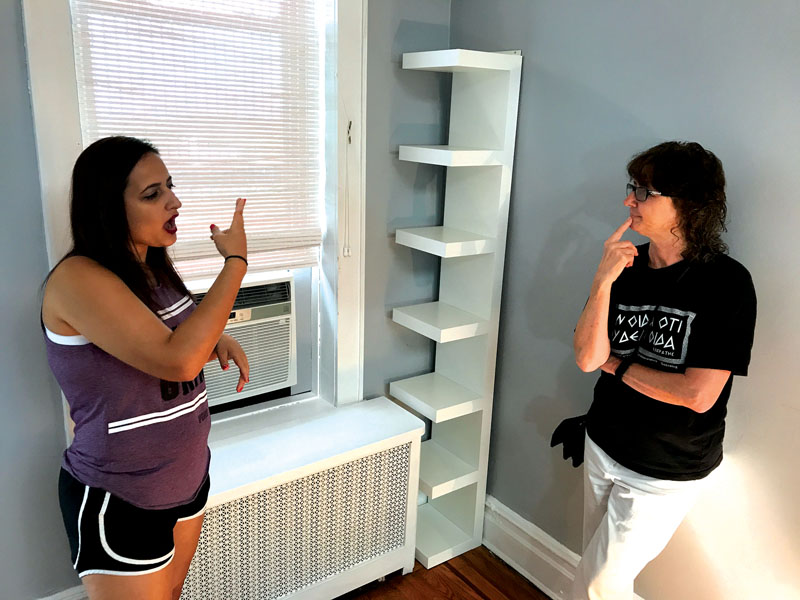Seaford resident makes directorial debut in Too Much Noise
 In Seaford resident Mike Flood’s directorial debut, Too Much Noise, a pair of young lovers find themselves at odds after a recent move to New York City. The risk-taking Curtis (Robert Parcells Jr.) and the more apprehensive Janas (Nour Ellakis) find their relationship put to the test, as they experience the difficulty of expressing their concerns to one another.
In Seaford resident Mike Flood’s directorial debut, Too Much Noise, a pair of young lovers find themselves at odds after a recent move to New York City. The risk-taking Curtis (Robert Parcells Jr.) and the more apprehensive Janas (Nour Ellakis) find their relationship put to the test, as they experience the difficulty of expressing their concerns to one another.
It’s a universal plight in many relationships, one that’s been explored in many movie and plot lines, but what makes Flood’s take on it so unique is that Too Much Noise focuses on the deaf community. The film is told almost entirely in American Sign Language (ASL) with actors who happen to be deaf.
“I made the intentional decision in the film for the characters not to talk about deafness in the city in their dilemma because their deafness is not the conflict,” said Flood, who both directed and wrote the film. “Their individual communication with each other, just like any couple, is the problem and they’re having problems with each other.”
Contrary to the plot, Flood was inspired when he realized not verbally communicating can be an advantage for the deaf. Recalling a night out at a loud club with friends several years ago, Flood noticed the effortless discussion between a pair in ASL while he and others in the hearing community needed to scream to have a conversation.
“It was so simple for them and I thought ‘you would think that with a disability, it would be a struggle for them but for them it was perfect’ and I was wondering what it was like to be deaf and be a couple,” Flood said, later learning the deaf do not consider themselves disabled. “The language is as robust, diverse and dynamic as any language. From my own ignorance and perspective I thought ASL would be limiting,” Flood said.
Originally written in the form of a short story, Flood struggled when he realized how dependent a written story is on sound.
“I couldn’t help it, it is just the way we live in the world,” he said. “I would read something like ‘crickets were chirping’ or hearing the breeze, all these things we love the sound of that we try to include in our depiction of the world, I realized I can’t use any of these things in a story about the deaf because they wouldn’t’ve heard it.”
It was after confiding about his standstill with friend and later, the film’s cinematographer Kenneth R. Frank that Flood realized his prose might better serve well in the visual medium. Flood valued authenticity to the daily lives of members of the deaf community and brought ASL interpreters Jennifer Ward-Schultz and Elizabeth Milana and technical producer and deaf consultant Danny Sellick, who is deaf, to the team.
As much as Flood desired for the film to not focus on deafness, he wanted the familiar story line to be presented with a distinct angle, but was unaware of the process for the actors to present the script in an effective way for the deaf and hearing communities.
“First and foremost was to tell a story and then to tell that story in a sensory way that would be challenging” he said. “I would think that I would just be able to write something down and a deaf person could read it and they would know what to sign, but that is not true at all; it’s almost like listening to someone speak English as a second language.”
Total immersion in a deaf person’s experience also served to be a challenge during production when discussing how much silence in the film would be tolerable for a hearing audience with Frank considering an unnerving experience for the audience and Flood prepared for discomfort.
Flood, however, vows deaf awareness is not the main point of the film but instead the challenge in dealing with ‘‘noise.”
“I’m not trying to advocate but I guess anytime you bring attention to a little understood group you are, I guess, a defacto advocate,” he said. “I asked the actors ‘what does the word noise mean to you as somebody who doesn’t hear?’ and they both described it independently as the chaos, busyness and stress for example, you could be in a noisy place and things are moving too fast, there’s people everywhere a lot going on, a lot of vibrations.”
As for the viewing experience, Flood hopes that audiences realize the similarities in challenges between both the deaf and hearing communities, especially with the meaning of noise in the ironic title.
“Let’s pretend we can’t hear anything for awhile and see what happens; let’s see how dependent we are on hearing and let’s see how long we can go without it,” he said. “Maybe for a few minutes recognize the world that which the deaf live without sound is not a disadvantage. It’s just their world and they get on perfectly without it.”
Too Much Noise will premiere on Aug. 17 at 8 p.m. during the “Relationships” segment of the Chain NYC Film Festival. For more information, visit www.inthegarageproductions.com/toomuchnoise.html.

































